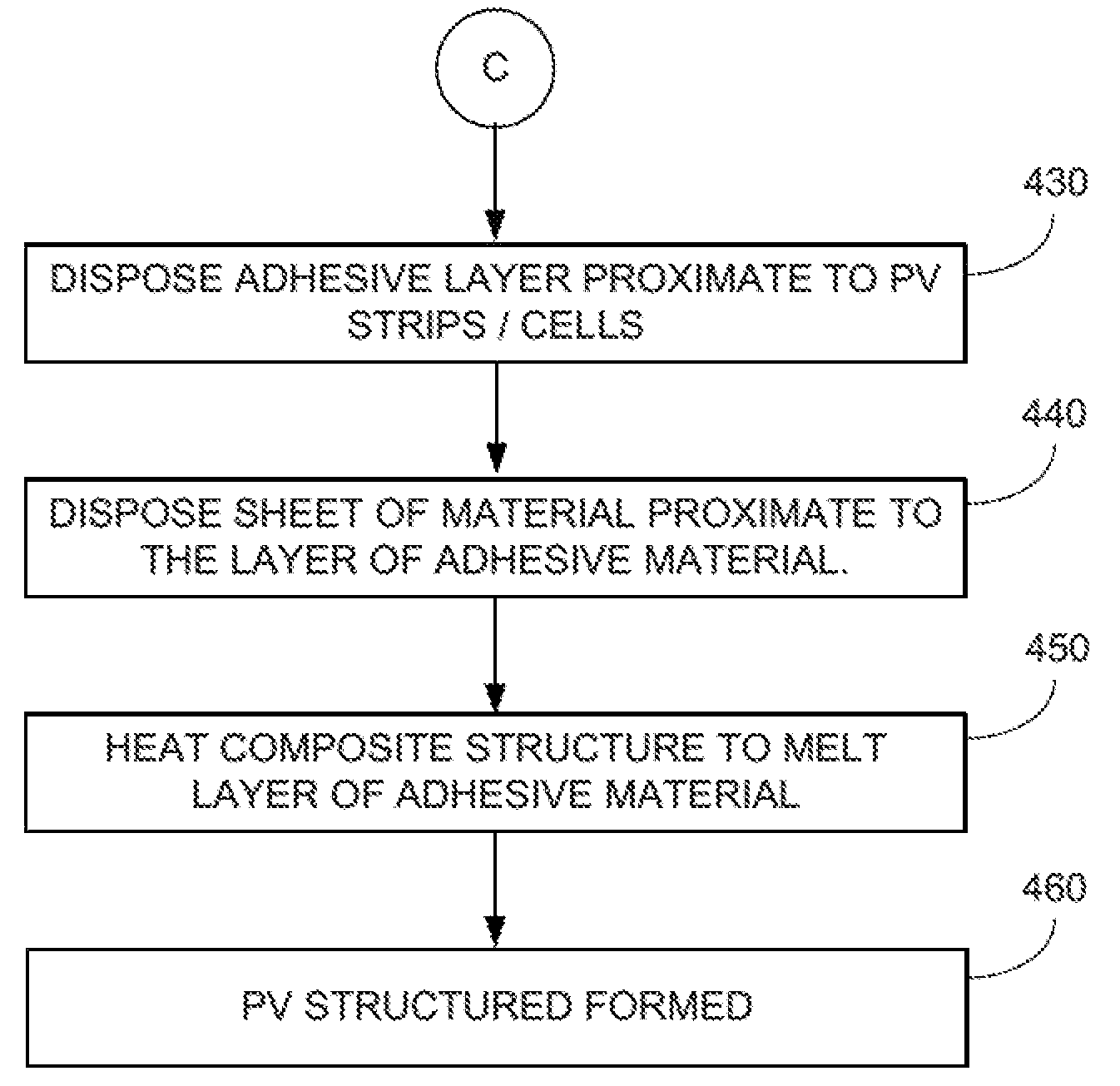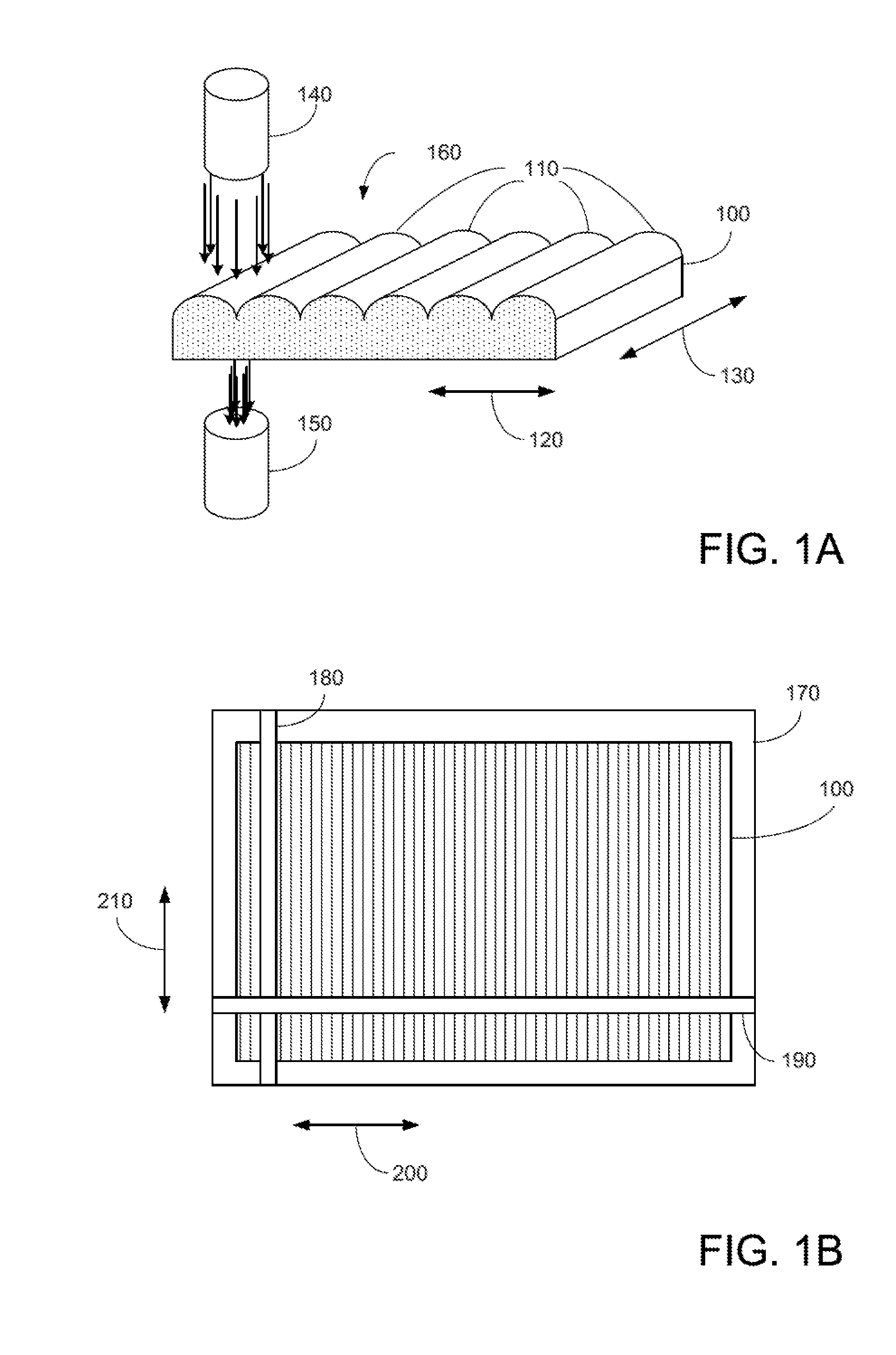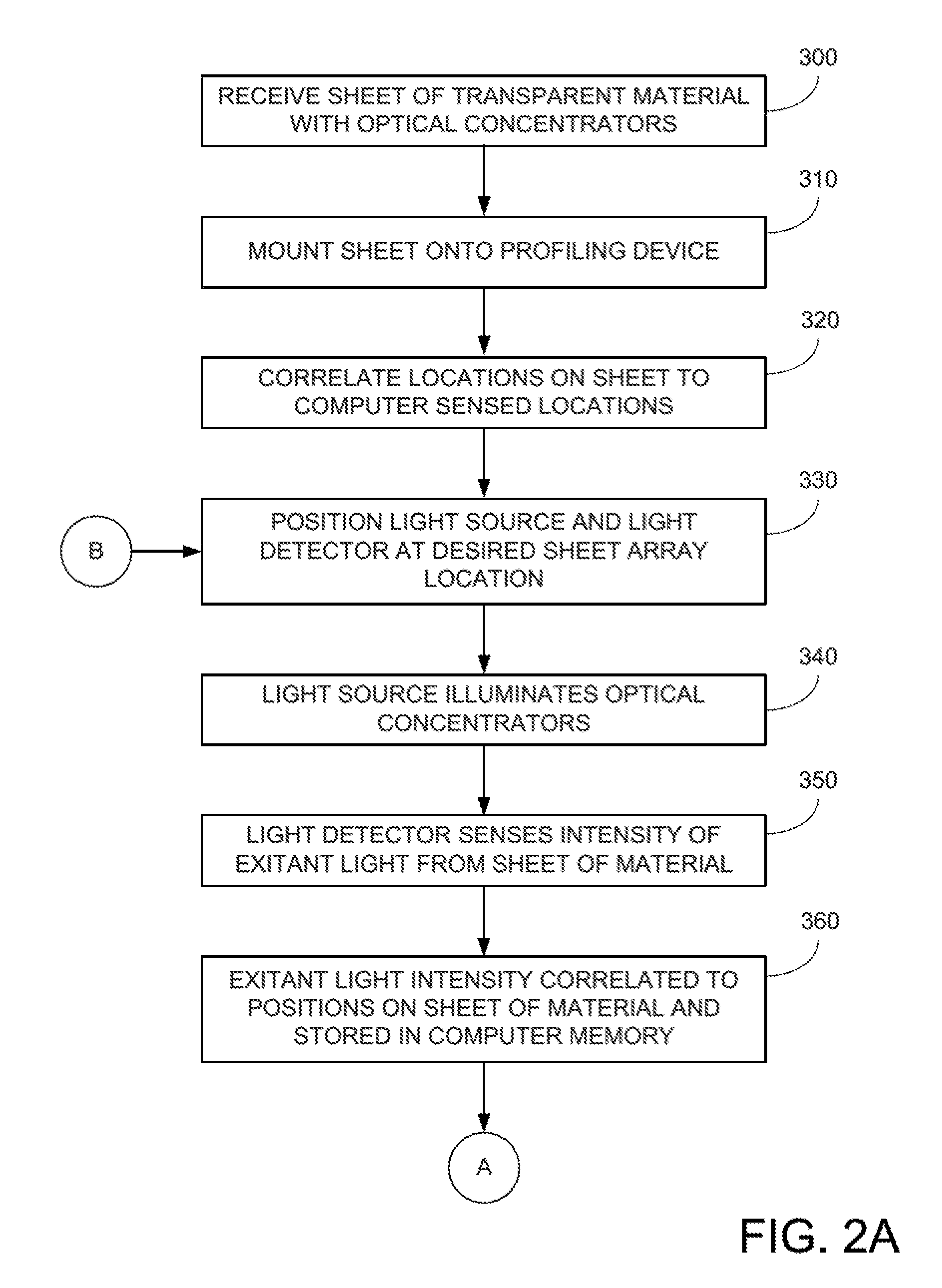Photovoltaic strip solar modules and methods
a technology of photovoltaic strip and solar modules, applied in the direction of sustainable manufacturing/processing, instruments, final product manufacturing, etc., can solve the problems of increased thickness of solar panels, loss of reflecting capability, exposed metal corroding, etc., and achieve greater angle of incidence capability and solar efficiency increase
- Summary
- Abstract
- Description
- Claims
- Application Information
AI Technical Summary
Benefits of technology
Problems solved by technology
Method used
Image
Examples
Embodiment Construction
[0024]FIGS. 1A-B illustrate various aspects according to embodiments of the present invention. More specifically, FIGS. 1A-B illustrate an apparatus for determining concentration characteristics of a sheet of material 100.
[0025]In FIG. 1A, an embodiment of a sheet of transparent (substantially transparent) material 100 is shown. In some embodiments, the sheet may be translucent. As can be seen, sheet 100 may include a number of concentrating elements 110 in a first direction 120. In one example, there are approximately 175 concentrating elements across sheet 100, although in other examples, the number of concentrating elements may vary. In various examples, the nominal pitch of concentrating elements 110 ranges from approximately 5.5 mm to 6 mm. In other embodiments, the nominal pitch may be 5.74+ / −0.2 mm, 7.0+ / −0.2 mm, or the like. In various embodiments, as the nominal pitch increases, fewer PV strips, described below, are required for PV assemblies or PV strings.
[0026]In various ...
PUM
 Login to View More
Login to View More Abstract
Description
Claims
Application Information
 Login to View More
Login to View More - R&D
- Intellectual Property
- Life Sciences
- Materials
- Tech Scout
- Unparalleled Data Quality
- Higher Quality Content
- 60% Fewer Hallucinations
Browse by: Latest US Patents, China's latest patents, Technical Efficacy Thesaurus, Application Domain, Technology Topic, Popular Technical Reports.
© 2025 PatSnap. All rights reserved.Legal|Privacy policy|Modern Slavery Act Transparency Statement|Sitemap|About US| Contact US: help@patsnap.com



